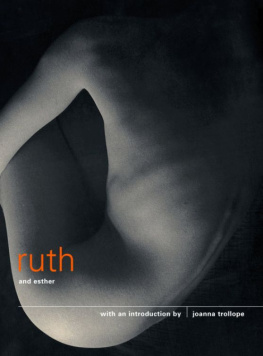PREFACE.
Table of Contents
The degree in which any social system has succeeded in ascertaining woman's proper position, and in putting her into it, will be a very accurate test of the progress it has made in civilisation. And the very general and growing conviction, that our own social arrangements, as they exist at present, have not attained any satisfactory measure of success in this respect, would seem, therefore, to indicate, that England in her nineteenth century has not yet reached years of discretion after all.
But conscious deficiency is with nations at least, if not always with individuals, the sure precursor of improvement. The path before us towards the ideal in this matter is a very long one; extends, indeed, further than eye can see. What path of progress does not? And our advance upon it will still be a sure concomitant and proof of our advance in all civilisation. But the question of more immediate moment is, admitting that we are moving in this respect, are we moving in the right direction? We have been moving for a long time back. Have we missed the right road? Have we unfortunately retrograded instead of progressing?
There are persons who think so. And there are not wanting, in the great storehouse of history, certain periods, certain individuals, certain manifestations of social life, to which such persons point as countenancing the notion, that better things have been, as regards woman's position and possibilities, than are now. There are, painted on the slides of Mnemosyne's magic lanthorn, certain brilliant and captivating figures, which are apt to lead those who are disgusted with the smoke and reek of the Phnix-burning going on around them, to suppose that the social conditions which produced such, must have been less far from the true path than our present selves. Nay, more. There have been constellations of such stars, quite sufficiently numerous to justify the conclusion, that the circumstances of the time at which they appeared were in their nature calculated to produce them.
Of such times, the most striking in this respect, as in so many others, is that fascinating dawn time of modern life, that ever wonderful "rnaissance" season, when a fresh sap seemed to rush through the tissues of the European social systems, as they passed from their long winter into spring. And in the old motherland of European civilisation, where the new life was first and most vehemently feltin Italy, the most remarkable constellations of these attractive figures were produced.
The women of Italy, at that period remarkable in different walks, and rich in various high gifts, form in truth a very notable phenomenon; and one sufficiently prevalent to justify the belief, that the general circumstances of that society favoured the production of such. But the question remains, whether these brilliant types of womanhood, attractive as they are as subjects of study, curiously illustrative as they are of the social history of the times in which they lived, are on the whole such as should lead us to conclude, that the true path of progress would be found to lead towards social conditions that should be likely to reproduce them?
Supposing it to be asserted, that they were not so necessarily connected in the relationship of cause and effect with the whole social condition of the times in which they lived, as that any attempt to resuscitate such types need involve a reproduction of their social environment; even then the question would remain, whether, if it were really possible to take them as single figures out of the landscape in which they properly stand, they would be such as we should find it desirable to adopt as models of womanhood? Are these such as are wanted to be put in the van of our marchin the first ranks of nineteenth century civilisation? Not whether they are good to put in niches to be admired and cited for this or that virtue or capacity; nor even whether they might be deemed desirable captains in a woman's march towards higher destinies and better conditioned civilisation, if, indeed, such a progress were in any sane manner conceivable; but whether such women would work harmoniously and efficiently with all the other forces at our command for the advancement of a civilisation, of which the absolute sine qu non must be the increased solidarity, co-operation, and mutual influence of both the sexes?
It may be guessed, perhaps, from the tone of the above sentences, that the writer is not one of those who think that the past can in this matter be made useful to us, as affording ready-made models for imitation. But he has no intention of dogmatising, or even indulging in speculations on "the woman's question." On the contrary, in endeavouring to set before the reader his little cabinet of types of womanhood, he has abstained from all attempt at pointing any moral of the sort. The wish to do so is too dangerously apt to lead one to assimilate one's portrait less carefully to the original than to a pattern figure conceived for the purpose of illustrating a theory. Whatever conclusions on the subject of woman's destiny, proper position, and means of development are to be drawn, therefore, from the consideration of the very varied and certainly remarkable types set before him, the reader must draw for himself. It has been the writer's object to show his portraits, more or less fully delineated according to their interest, and in some measure according to the abundance or the reverse of available material, in their proper setting of social environment. They have been selected, not so much with any intention of bringing together the best, greatest, or most admirable, nor even the most remarkable women Italy has produced, as with a view of securing the greatest amount of variety, in point of social position and character. Each figure of the small gallery will, it is hoped, be found to illustrate a distinct phase of Italian social life and civilisation.
The canonised Saint, that most extraordinary product of the "ages of faith," highly interesting as a social, and perhaps more so still as a psychological phenomenon;the feudal Chtelaine, one of the most remarkable results of the feudal system, and affording a suggestive study of woman in man's place;the high-born and highly-educated Princess of a somewhat less rude day, whose inmost spiritual nature was so profoundly and injuriously modified by her social position;the brilliant literary denizen of "La Bohme;"the equally brilliant but large-hearted and high-minded daughter of the people, whose literary intimacies were made compatible with the strictest feminine propriety, and whom no princely connections, lay and ecclesiastical, prevented from daring to think and to speak her thought, and to meet with brave heart the consequences of so doing;the popular actress, again a daughter of the people, and again in that, as is said, perilous walk in life, a model of correct conduct in the midst of loose-lived princesses;the nobly-born adventuress, every step in whose extraordinary excelsior progress was an advance in degradation and infamy, and whose history, in showing us court life behind the scenes, brings us among the worst company of any that the reader's varied journey will call upon him to fall in with;the equally nobly-born, and almost equally worthless woman, who shows us that wonderful and instructive phenomenon, the Queen of a papal court;the humbly born artist, admirable for her successful combination in perfect compatibility of all the duties of the home and the studio;and lastly, the poor representative of the effeteness of that social system which had produced the foregoing types, the net result, as may be said, of the national passage through the various phases illustrated by them:all these are curiously distinct manifestations of womanhood, and if any measure of success has been attained in the endeavour to represent them duly surrounded by the social environment which produced them, while they helped to fashion it, some contribution will have been made to a right understanding of woman's nature, and of the true road towards her more completely satisfactory social development.








